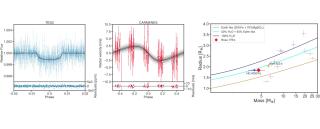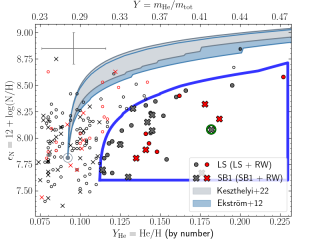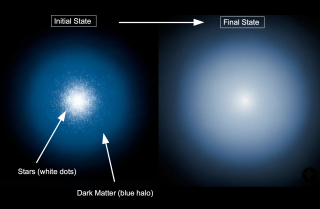The hypothesis of a universal initial mass function (IMF) - motivated by observations in nearby stellar systems - has been recently challenged by the discovery of a systematic variation of the IMF with the centralvelocity dispersion, σ, of early-type galaxies (ETGs), towards an excessof low-mass stars in high-σ galaxies. This trend has been derived so farfrom integrated spectra, and remains unexplained at present. To testwhether such trend depends on the local properties within a galaxy, we have obtained new, extremely deep, spectroscopic data, for three nearby ETGs, two galaxies with high σ (~300 km/s), and one lower mass system, with σ ~100 km/s. From the analysis of IMF-sensitive spectral features, we find that the IMF depends significantly ongalactocentric distance in the massive ETGs, with the enhanced fraction of low-mass stars mostly confined to their central regions. In contrast, the low-σ galaxy does not show any significant radial gradient in the IMF, well described by a shallower distribution, relative to the innermost regions of massive galaxies, at all radii. Such a result indicates that the IMF should be regarded as a local (rather than global) property, and suggests a significant difference between the formation process of the core and the outer regions ofmassive ETGs
Advertised on
References
It may interest you
-
 The TESS (Transiting Exoplanet Survey Satellite) mission has discovered many exoplanet candidates that need to be confirmed and characterized from the ground. One of them orbits Ross 176, a K-type dwarf star, where we have identified a promising hot “water-world” candidate. Using spectroscopic observations with the CARMENES instrument, we confirmed the planetary nature of the signal detected by TESS and estimated the planet’s mass. To improve the analysis, we applied an advanced statistical method called Gaussian Process, which allowed us to separate the star’s own variability (quite strongAdvertised on
The TESS (Transiting Exoplanet Survey Satellite) mission has discovered many exoplanet candidates that need to be confirmed and characterized from the ground. One of them orbits Ross 176, a K-type dwarf star, where we have identified a promising hot “water-world” candidate. Using spectroscopic observations with the CARMENES instrument, we confirmed the planetary nature of the signal detected by TESS and estimated the planet’s mass. To improve the analysis, we applied an advanced statistical method called Gaussian Process, which allowed us to separate the star’s own variability (quite strongAdvertised on -
 There is increasing evidence that single-star evolutionary models are unable to reproduce all of the observational properties of massive stars. Binary interaction has emerged as a key factor in the evolution of a significant fraction of massive stars. In this study, we investigate the helium (Y(He)) and nitrogen surface abundances in a comprehensive sample of 180 Galactic O-type stars with projected rotational velocities of ≤150 km/s. We found a subsample (~20% of the total, and ~80% of the stars with Y(He) ≥ 0.12) with a Y(He) and nitrogen abundance combined pattern that is unexplainable byAdvertised on
There is increasing evidence that single-star evolutionary models are unable to reproduce all of the observational properties of massive stars. Binary interaction has emerged as a key factor in the evolution of a significant fraction of massive stars. In this study, we investigate the helium (Y(He)) and nitrogen surface abundances in a comprehensive sample of 180 Galactic O-type stars with projected rotational velocities of ≤150 km/s. We found a subsample (~20% of the total, and ~80% of the stars with Y(He) ≥ 0.12) with a Y(He) and nitrogen abundance combined pattern that is unexplainable byAdvertised on -
 Only a handful of observations truly constrain the nature of dark matter, which is why dozens of different physical models are still viable. Several of the most popular alternatives predict that dark matter halos slowly “thermalize” over time, gradually changing shape and expanding until they form a central region of nearly constant density -- a core. This transformation would not occur if the dark matter particles were completely collision-less, as assumed in the standard model. Therefore, the presence or absence of such a core provides a powerful way to distinguish between the standardAdvertised on
Only a handful of observations truly constrain the nature of dark matter, which is why dozens of different physical models are still viable. Several of the most popular alternatives predict that dark matter halos slowly “thermalize” over time, gradually changing shape and expanding until they form a central region of nearly constant density -- a core. This transformation would not occur if the dark matter particles were completely collision-less, as assumed in the standard model. Therefore, the presence or absence of such a core provides a powerful way to distinguish between the standardAdvertised on